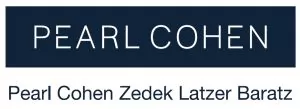The U.S. Patent and Trademark Office has updated its guidance to examiners on how to determine if patent applications contain ineligible material such as abstract ideas. The update follows public comments to the USPTO requesting more information about its new policies, announced in January, which have been viewed as limiting the types of material examiners should reject as patent-ineligible.
The update does not change the policies started in January, but responds to the public comments and "provides further explanation on how the USPTO applies such guidance." It includes more details about what should be considered patent-ineligible and the responsibility of examiners to provide adequate notice to applicants about eligibility rejections.
The guidance is in response to recent court decisions on patent eligibility which, per the USPTO, have become "increasingly more difficult for examiners to apply in a predictable manner." To that end, the guidance lays out three categories—mathematical concepts, methods of organizing human activity, and mental processes—that the USPTO believes constitute abstract ideas, part of the patent -ineligible subject matter under the Supreme Court’s Alice decision. Patent claims that do not fall within those categories should generally not be rejected as ineligible. Indeed, such claims can only be rejected as patent-ineligible in the "rare circumstance" where an examiner believes they should be. Even claims with material that is within the three categories should not be rejected if they are "integrated into a practical application."
The USPTO's update provides additional details about how examiners should explain their rejections to applicants, what falls into the three categories of abstract ideas, and explains the "rare circumstances" in which examiners can reject claims that don't strictly fall under the guidance. By way of example, the burden is on the examiner to explain why a claim is ineligible, and to do so "clearly and specifically, so that the applicant has sufficient notice and is able to effectively respond." That includes identifying the ineligible judicial exception by referring to what is described in the patent and explaining why it is considered an exception, and also detailing why the elements of the claims are being rejected for not being integrated into a practical application.
The update also provides additional details and examples. For example, an application cannot be rejected for being directed to a mathematical concept "if it is only based on or involves a mathematical concept." However, claims that recite numerical formulas, equations or mathematical calculations do fall into the category and can be deemed ineligible. The category of "methods of organizing human activity" does not cover all such methods, and that in most cases it applies only to "fundamental economic principles or practices, commercial or legal interactions, managing personal behavior, and relationships or interactions between people." Examples of such activities include insurance and loan processing, and can involve interactions between a human and a computer. Mental processes involve things that can be done by the human mind. Claims should not be rejected "when the human mind is not equipped to perform the claim limitations," e.g., technology such as encryption and monitoring computer networks. However, patent claims that use a generic computer to perform something a human being can do with their mind, and claims that involve something a human can do using a pen and paper, can still be deemed a patent-ineligible mental process.
Regarding the "rare circumstance" in which a claim does not fall within one of the three specific patent-ineligible categories but the examiner still believes it should be rejected as ineligible, examiners will need the approval of the director of the technology center where they work at the office to make such a decision. If approved, the decision will be recorded on the patent and the public will be notified on the USPTO's website.
The update also provides more detail on what it means for an abstract idea or other judicial exceptions, e.g., laws of nature and natural phenomena to "integrated into a practical application," making the claims patent-eligible. Per the USPTO guidance, inventions that improve the functioning of a computer or other technology can meet that requirement, and the patent "need not explicitly set forth the improvement, but [ ] must describe the invention such that the improvement would be apparent to one of ordinary skill in the art." Likewise, natural phenomena or laws of nature that are integrated into particular ways of treating or preventing disease or in medicine can be found to be patent-eligible. However, such treatments must be specifically identified and have more than a nominal relationship to the judicial exception and must impose meaningful limits, it said.
Finally, the update seeks to mitigate a concern that an examiner's failure to follow the guidance is not a proper basis for an applicant to appeal the rejection of a patent application. While the guidance document does not have the force of law, the USPTO stressed that it "does constitute office guidance and, accordingly, USPTO personnel are expected to follow it." Notably, the guidance applies to all office employees, including examiners and Patent Trial and Appeal Board (“PTAB”) judges. Finally per the USPTO, when an application is rejected on the basis of patent-ineligible subject matter, that decision can be appealed to the PTAB and the applicant can rely on the guidance to argue that the rejection was wrong. However, the PTAB reviews the rejection itself, not any alleged failure to follow the guidance.
The content of this article is intended to provide a general guide to the subject matter. Specialist advice should be sought about your specific circumstances.

